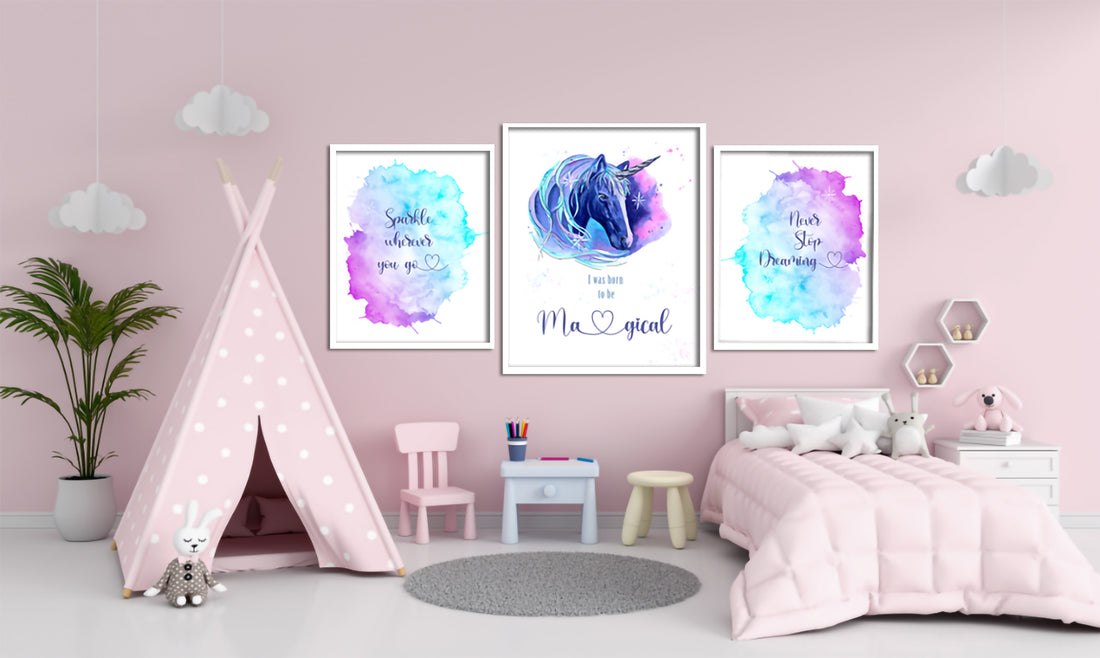Decorating your living space with wall art is a wonderful way to express your personality and enhance the ambiance of your home. However, hanging wall art is not just about nailing a frame to the wall randomly. There's an art to it! In this guide, we'll explore some ways to hang wall art to ensure that your masterpieces are displayed in the best possible light.

- Consider the Wall Space: Before you start hammering nails into the wall, take a moment to consider the available wall space. Determine the size and layout of the area where you plan to hang the art. Is it a small nook that needs a small, intimate piece, or a large, open wall that can accommodate a larger artwork or gallery wall set up? Understanding the space will guide your choices.
-
Eye Level Rule: The general rule of thumb is to hang your art at eye level. This ensures that it's easily visible and creates a comfortable viewing experience. For most people, eye level is around 57 to 60 inches from the floor. If you're hanging art in a room where people are usually sitting, like a dining room, you can adjust the height accordingly.

-
Grouping Artwork: If you have multiple pieces to hang, consider creating a gallery wall or grouping them together. When arranging a group of artworks, lay them out on the floor first to find a pleasing composition. Maintain consistent spacing between frames to create a cohesive look. Grouping can also be done by theme or color scheme for added impact. Consider using a variety of different types of frames in a grouping for added interest or a more eclectic look.

-
Balancing Act: Achieving balance in your wall art arrangement is crucial. If you have a large, bold piece of art on one side, balance it with a smaller piece or a collection of smaller artworks on the opposite side. Balance can be achieved through symmetry or asymmetry, depending on your preference. Also, consider the visual design created by the artwork. You want to bring the viewer into your grouping so use the design of the work to do that. notice in the pieces below how the angles of the buildings draw your eye to the center.
Figurative pieces look better if facing each other.


- Consider the Furniture Below: When hanging art above furniture, ensure that there's a visual connection between the two. The bottom edge of the frame should ideally be 6 to 12 inches above the furniture. This helps create a unified look and prevents the artwork from feeling disconnected from its surroundings.
- Mixing Art and Function: Integrate functionality with your wall art by incorporating shelves or hooks for practical items like keys, hats, or decorative objects. This not only adds a layer of functionality but also contributes to the overall aesthetic of the space.
- Lighting Matters: Consider the lighting in the room when hanging art. Avoid placing artwork in direct sunlight, as it can fade over time. Use adjustable lighting fixtures to highlight specific pieces and create a dynamic visual impact.
Hanging wall art is an art form in itself. By considering the space, eye level, balance, and functionality, you can transform your walls into a gallery that reflects your style and personality. Take your time, experiment with arrangements, and enjoy the process of turning your living space into a curated masterpiece.

